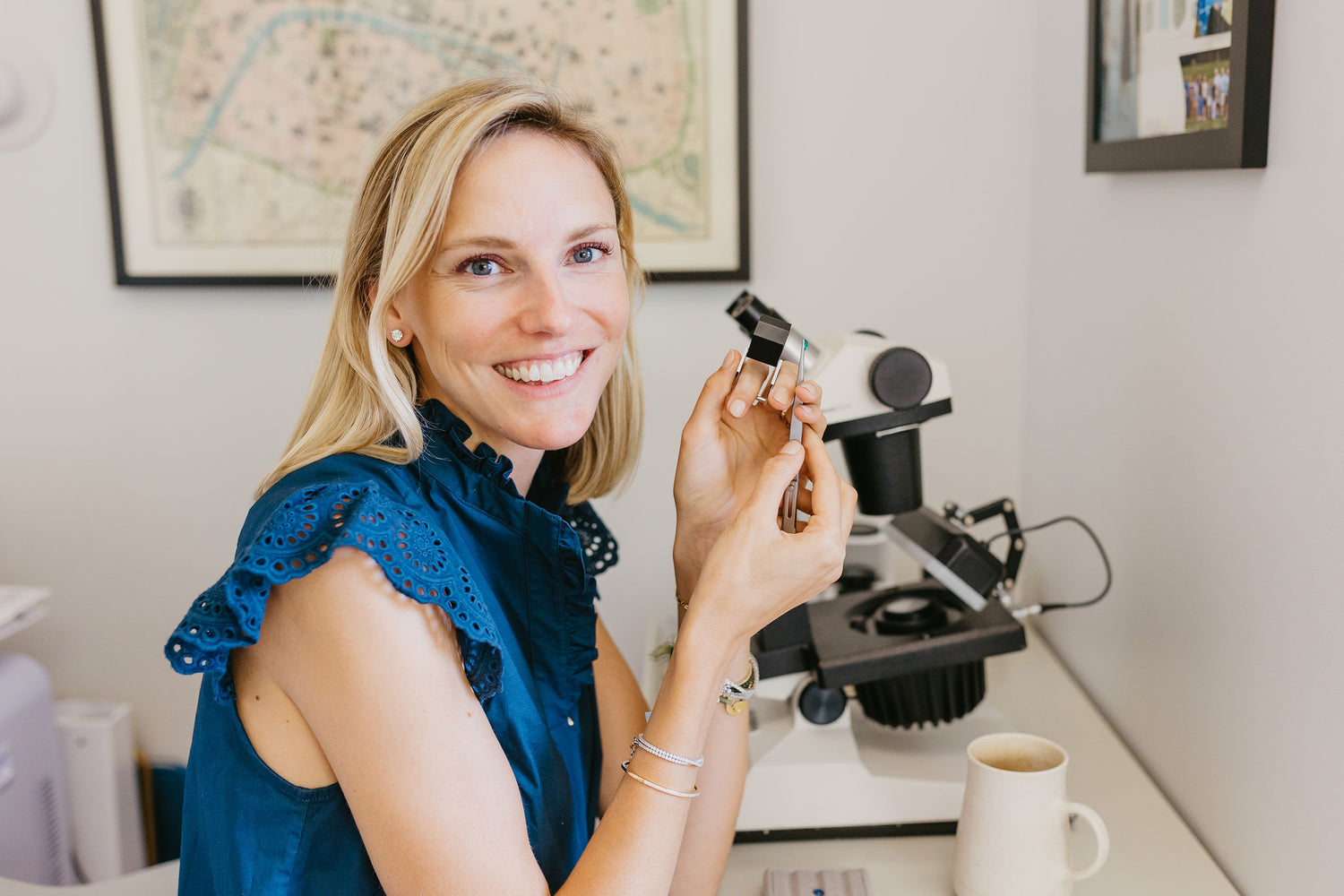Pearls
Pearls have been popular for centuries. From emperors and empresses to add-a-pearl necklaces, to everyday items like buttons, pearls have run the gamut in both uses and popularity, but have been surging with popularity as of late.
I admire pearls on a personal level. During college, I completed my senior thesis about oysters (Crassostrea virginica, not the pearl producing species'), but I grew to appreciate mollusks for more than just food. I even wore a strand of Tahitian pearls for my senior sorority photograph. I continued my admiration after completing my Graduate Pearl course with GIA...there is much more to pearls than meets the eye!
Christopher Columbus believed pearls were formed from dew drops, but in actuality, pearls are grown in mollusks (most commonly oysters), with different varieties producing different kinds of pearls. Almost all pearls on the market today are cultured, or grown with human intervention. Natural pearls are challenging to find (due to decreasing natural populations), and when they are found, they are rarely round and they don't often have the quality factors we have grown to appreciate and expect from pearls. Natural pearls are also prohibitively expensive due to their rarity.
When you think of pearls, your mind probably goes to your Grandmother's white strand of pearls, but there are four main types of pearls. Some pearls are "white," but there are also black, silver, gold, pink, even purple pearls. It just depends on the type of pearl you come across.
Pearl Types
Akoya - this is the kind of pearl you likely think of when you think about pearls. Akoyas were the first spherical cultured pearls marketed in the jewelry industry, and they range in size from 2mm to 11mm, with the most common size being between 6mm and 8mm. Smaller akoyas (less than 8mm in size) are grown in China, while larger akoyas (8.5mm or larger) are grown in Japan. They are typically white or cream colored. Akoyas provide affordable, medium sized, well-matched cultured pearls for consumers all over the world.
 14k Yellow Gold Earrings with Diamonds & Freshwater Pearls
14k Yellow Gold Earrings with Diamonds & Freshwater Pearls
Freshwater - Most freshwater pearls in today's market are grown in China. They range in size from 4mm to 14mm. Freshwater pearls come in a variety of shapes, but about 40% have a baroque or semi-baroque shape.Another shape of freshwater pearl you might be familiar with are rice pearls. They're Chinese freshwater pearls that are shaped like rice grains. Freshwater pearls are white or cream colored and can have yellow, orange, pink or purple hues.
 Golden South Sea Pearls
Golden South Sea Pearls
South Sea - when you think of South Sea pearls, you should generally think of their large size. They're the largest pearl type on the market, and range in size from 8mm-20mm. The larger the pearl is, the greater the value. They take about 18 - 24 months to grow (compared to Akoyas which only take six to 12 months!), so the mollusks require much more "babysitting," also driving costs up. They come from either gold-lipped or silver-lipped mollusks, so can range color from white to cream to silver with varying hues and overtones.
 Tahitian Pearls
Tahitian Pearls
Tahitian - Think of the beautiful black pearls you have seen throughout your life - these are Tahitian pearls. These are the most typical Tahitian pearls, but in reality, they come in a variety of hues. With names like Peacock, Aubergine, or Pistachio, you can envision the colors and tones that these pearls come in. Because of their luster, some pearls can almost be metallic! Tahitian pearls range in size from 9mm to 14mm and also come in a variety of shapes.
Long story short: there is a pearl out there for everyone!
How to Care for your Pearls
All jewelry should be treated delicately, but pearls in particular. Put your jewelry on after you apply hairspray, perfume, or any other cosmetic. Once you take them off, wipe them down with a clean, damp cloth and store them away from other gems that could potentially scratch them. Pearls are organic materials and need moisture, so if they're stored in a safety deposit box or any other sealed container for a long period of time, they can dry out. Pearls should be the last thing you put on when getting dressed and the first thing you take off.



 14k Yellow Gold Earrings with Diamonds & Freshwater Pearls
14k Yellow Gold Earrings with Diamonds & Freshwater Pearls Golden South Sea Pearls
Golden South Sea Pearls Tahitian Pearls
Tahitian Pearls